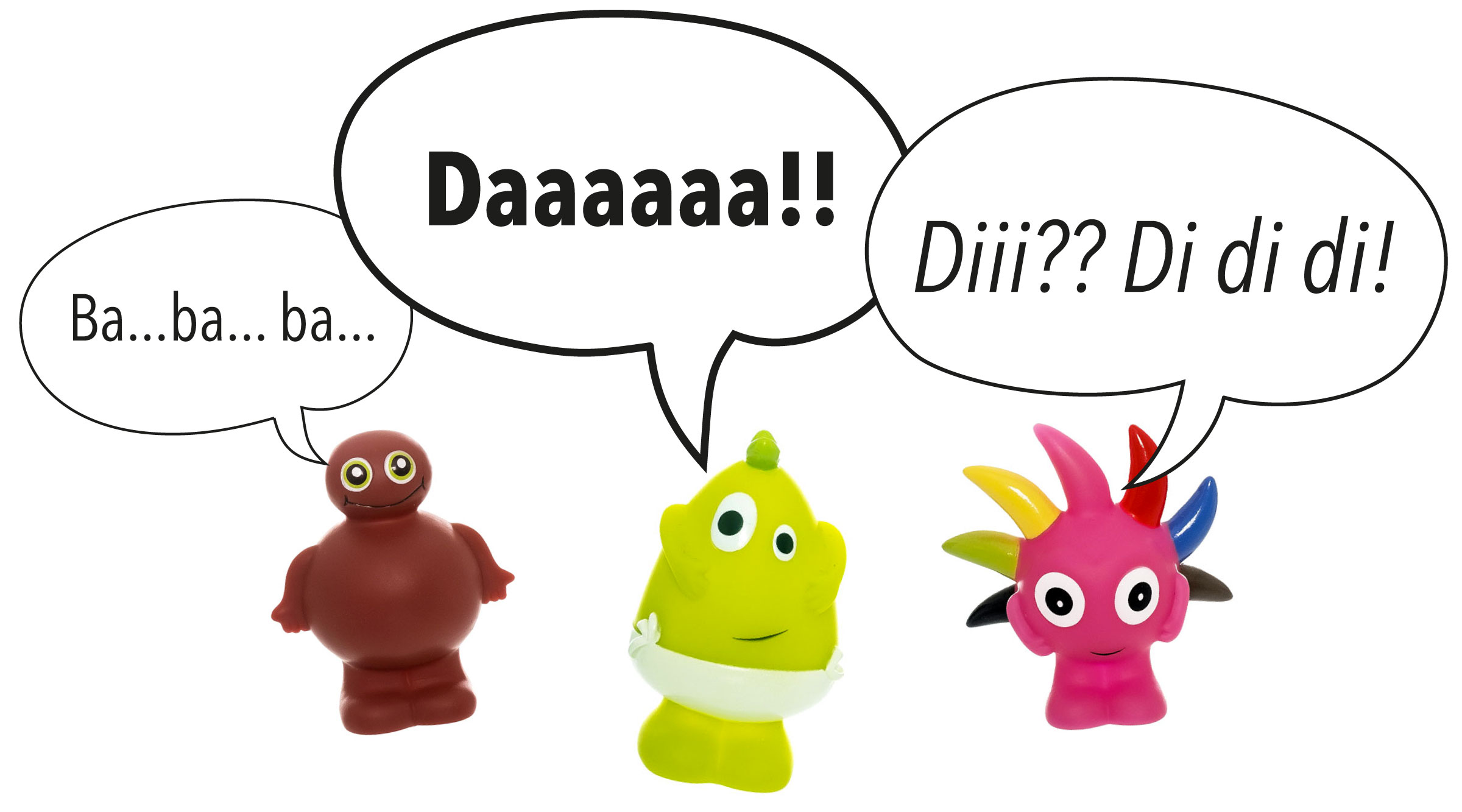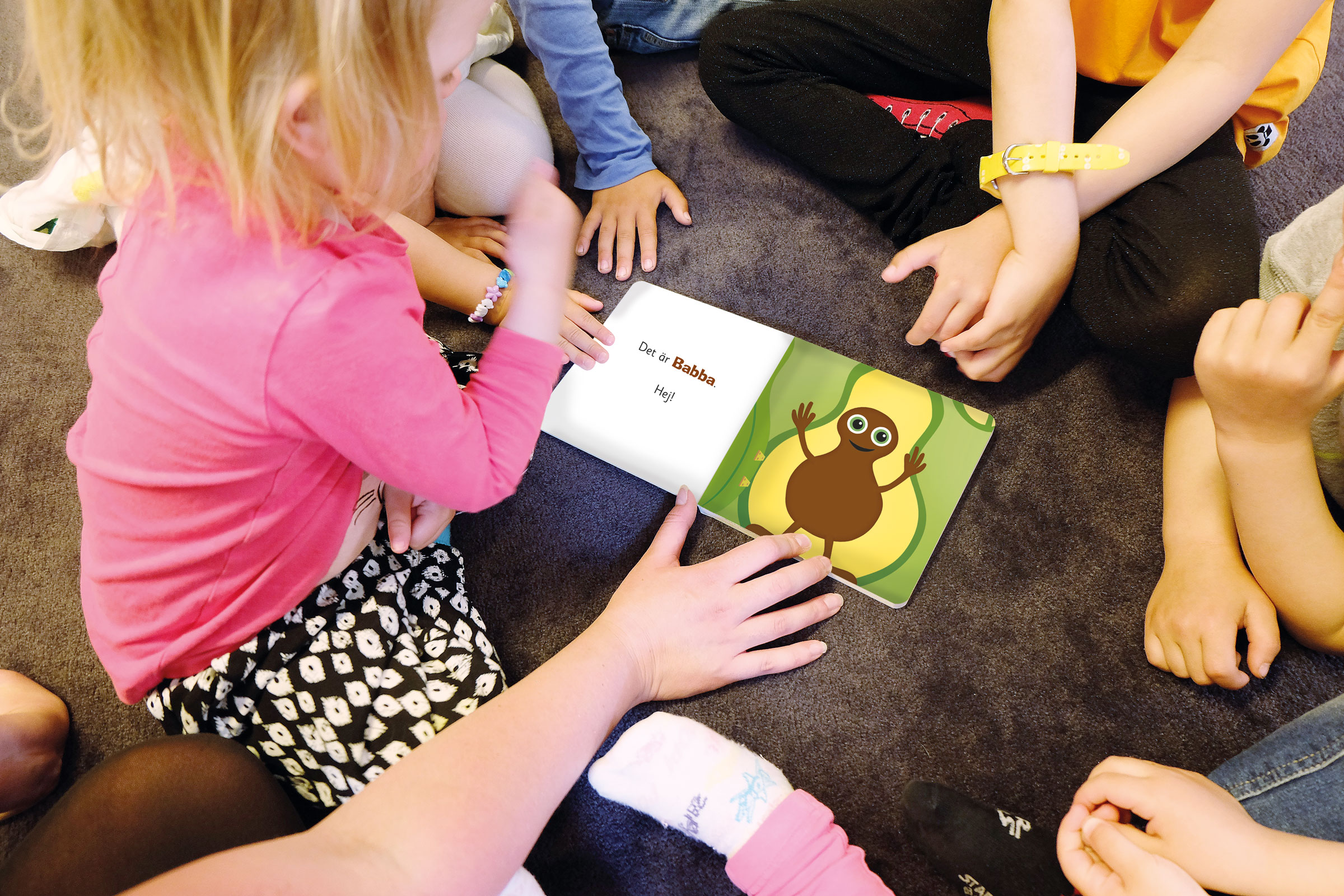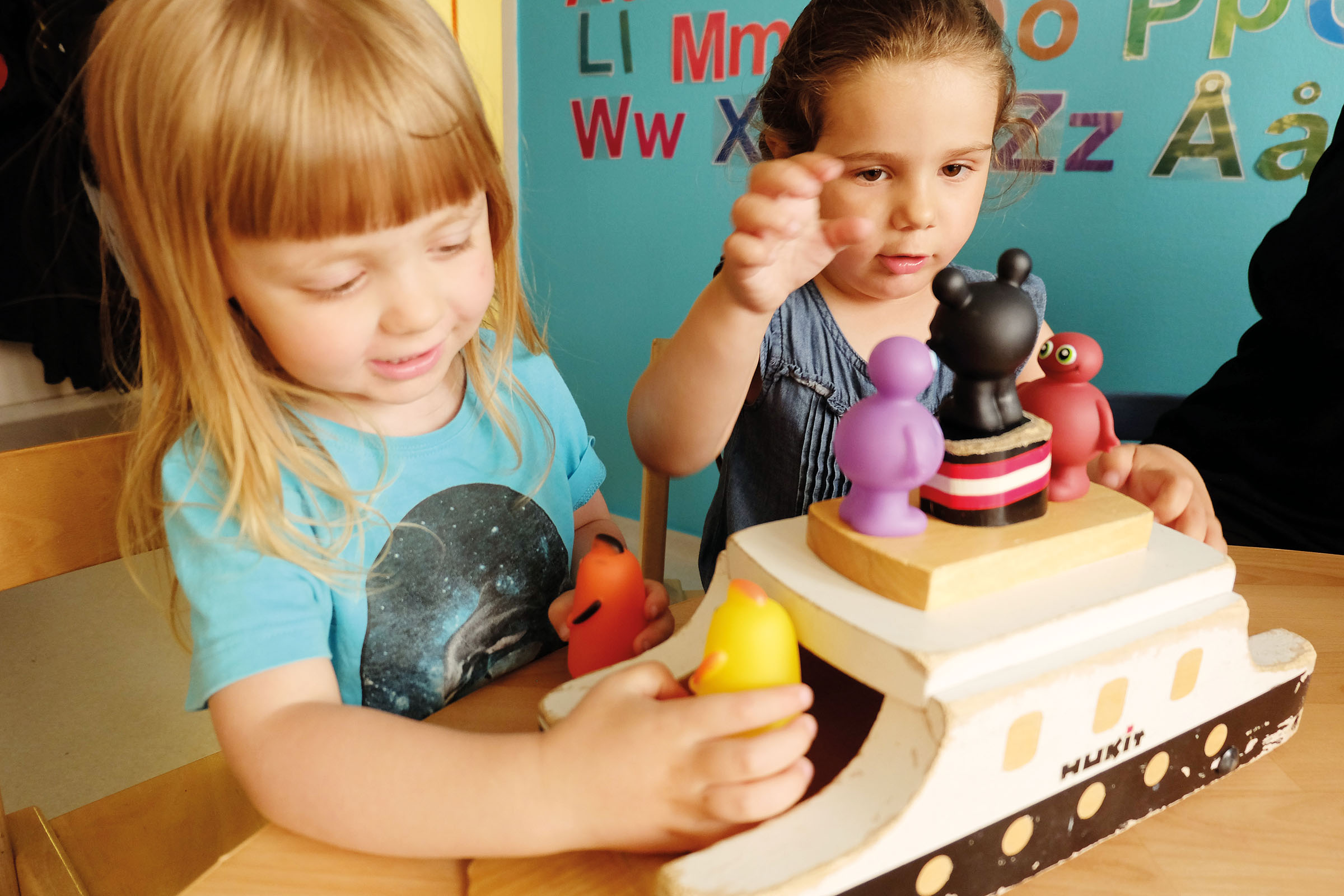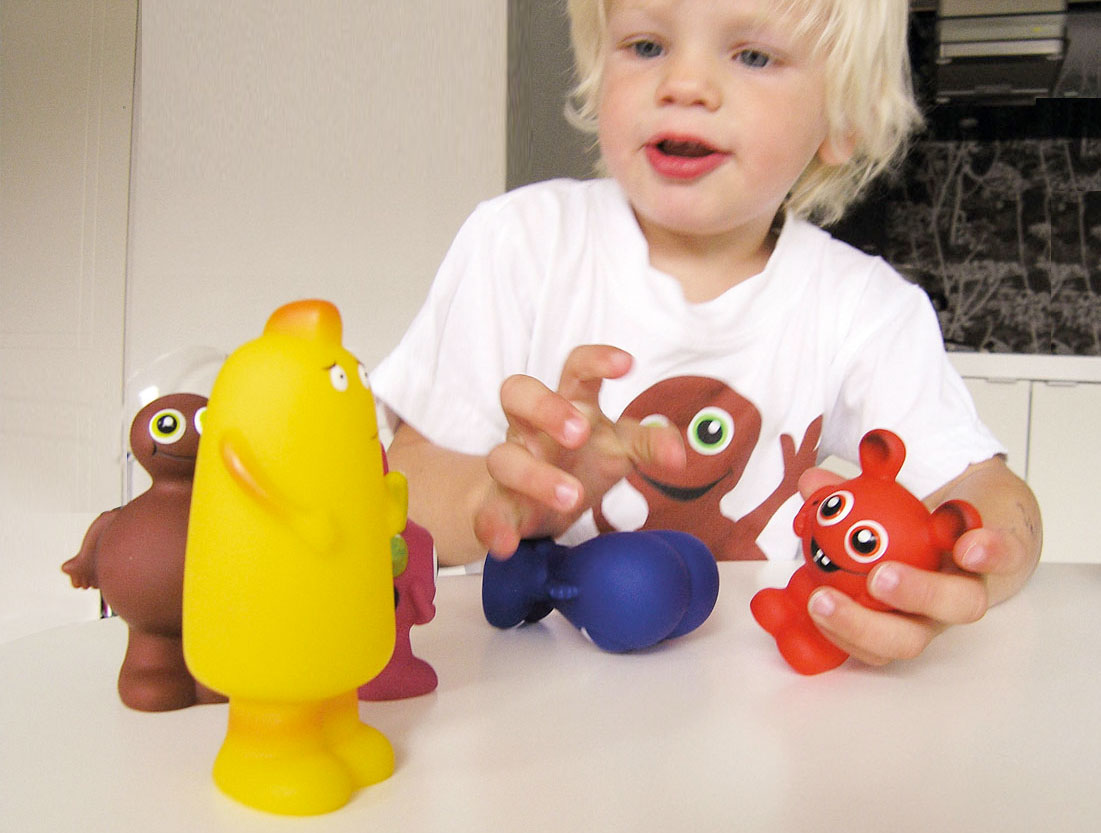
Language play with Babblarna
The Babblarna are more than just a group of colorful characters. Here we have gathered some tips on how they can be used to play and develop speech and language:
Talk about and like the Babblarna!
The fact that the Babblarna have their particular names is no coincidence. Their names are composed of language sounds that appear early in children’s speech and they are therefore often easy for children to start saying. The Babblarna themselves speak with the sounds in their names, so Diddi speaks “di diddi diii” and Babba “baaa babab ba”. By playing and sounding like the Babblarna and encouraging imitation, the child can get started and get a taste of speech even before the real words come.
Practice listening
A good first step in playing with the characters is to train the ear to hear the small differences between the language sounds in the names. With the characters, the child learns to hear the difference between the language sounds ba-da, bi-di, bo-do and ba-bi-bo or da-di-do. Play with the characters and ask your child to give you, for example, Bibbi. Remember not to start with all the characters at once, start with only two characters and as the child becomes confident, add another character and so on. Make the game fun and exciting and let the characters hide and play peekaboo.
Act happy, act sad
If the child has learned to say one or several of the characters’ names, you can start playing fun role-playing games where the child has one character and you another. The child says ba-ba-ba-ba and you respond with your character sounding as if you are really talking, but only use the character’s sound – di-di-di-di-di. Pretend as if you are asking questions, becoming happy, becoming sad, and so on – but only do it with your character’s language sounds, not words. Let the difference be clear in how you sound when you speak happily, sadly, loudly, quietly, and so on. Your child is then enticed to try to speak with Swedish intonation and stress patterns, without knowing any words – it’s excellent preparation for later speaking with words.
Read the books and put words on everything!
Reading children’s books is always stimulating for language, but Babblarna’s books come with an extra language-stimulating twist. They have a thought-out structure with clear repetition throughout the book, giving children a distinct space to guess, fill in, and be an active part of the reading. Babblarna’s books are not just something one reads, but rather something one does together with the child. The basic idea in all Babblarna’s books is that the child should be as active as possible and fill in words or answer questions in their own way and at their own pace.
Again and again
A good way to think about book reading and games is that what is familiar to the child, and what they already know, is the most fun. Most children love to read the same book over and over again and that’s great! In repetition, children reinforce their linguistic knowledge. When the child knows the book or game almost by heart, it’s a good idea to start adding something small and new at each reading.
Structure
It’s no coincidence that Babblarna’s books are clearly structured and always set up in the same way.
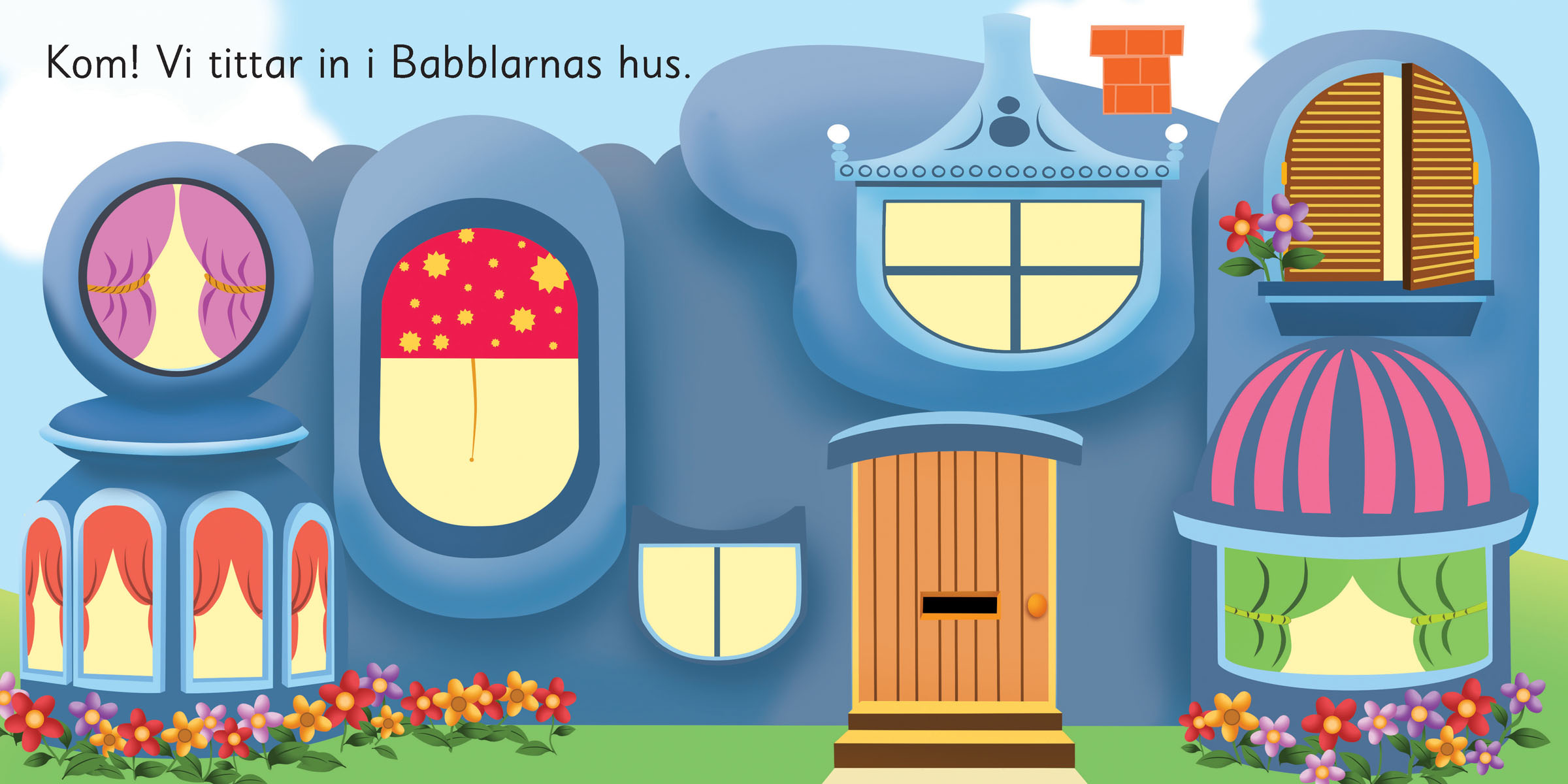
First, in most of Babblarna’s books, there is a spread that acts as an introduction to what the book will be about. When the child already knows the content of the book, it’s fun for the child to already on this first spread tell what is going to happen! It’s good memory training and practice in telling oneself.
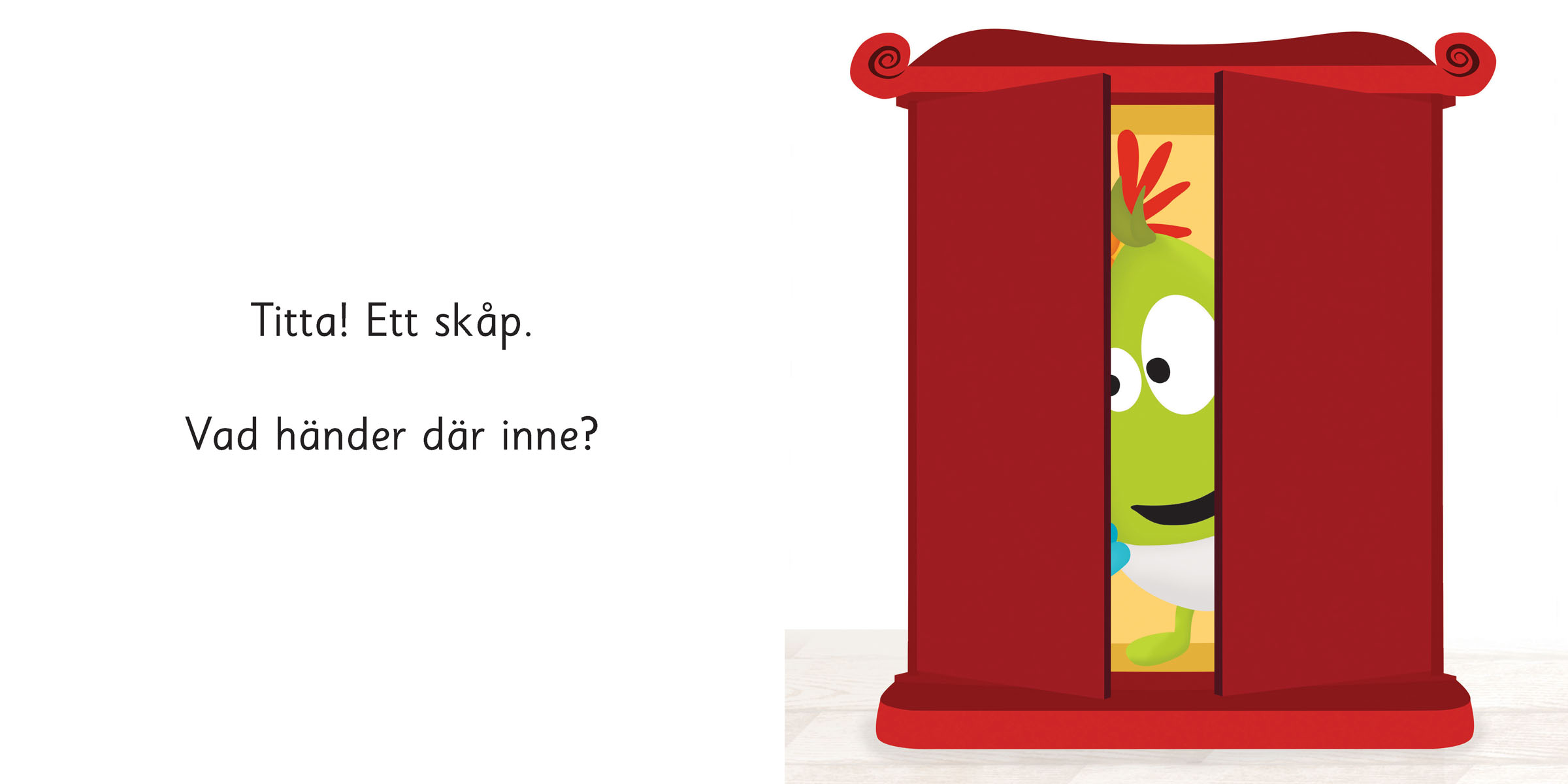
Then follow the spreads with questions that you ask and which give a clear space for the child to answer, guess or fill in. Let the child take their place and give plenty of time to play their role. In the beginning, you can happily help the child to answer together with you, soon the child wants to answer themselves.
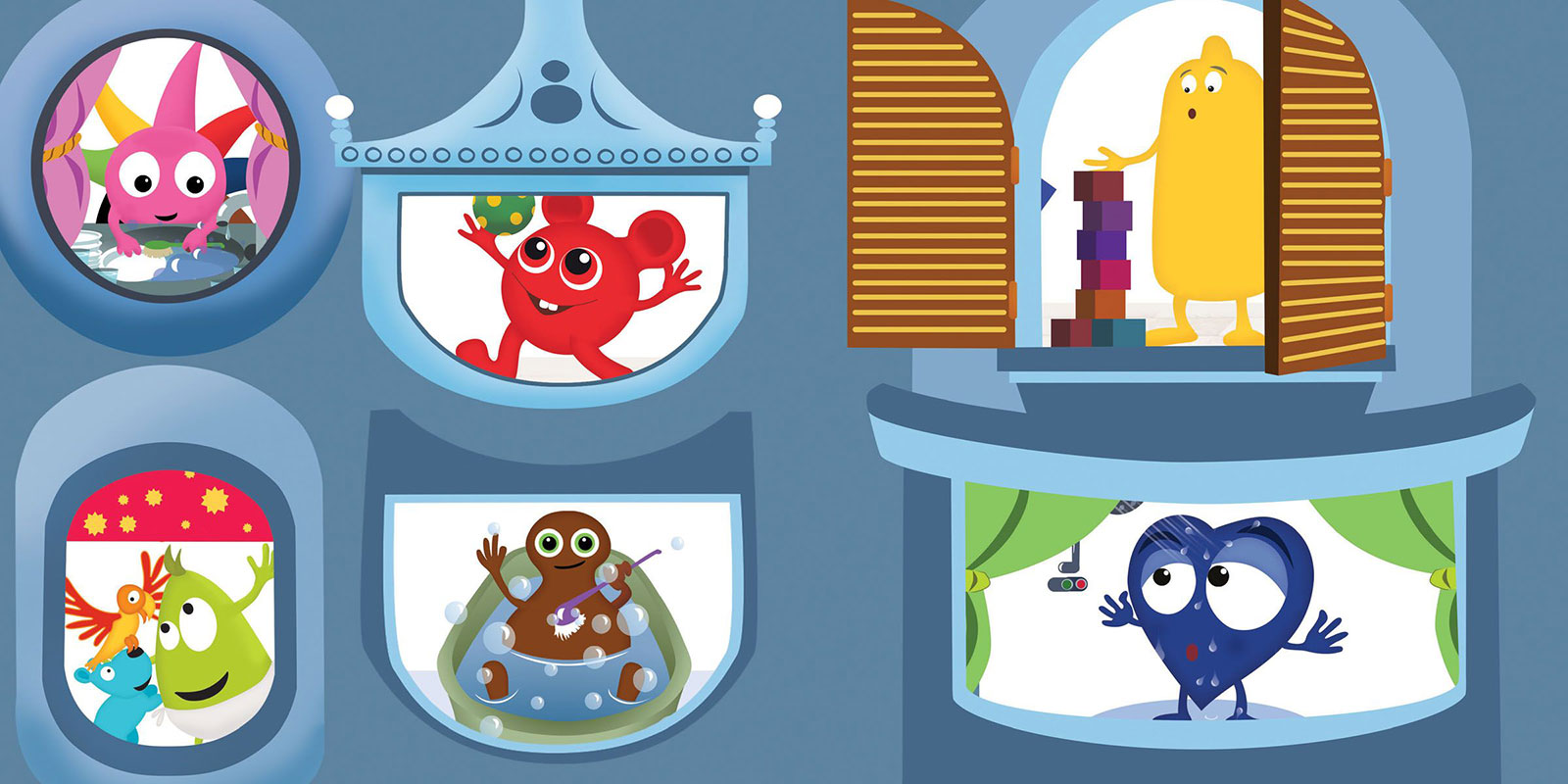
Last in most of the books, there is a spread that summarizes what the book was about. Here the child can tell what the different characters did or chose. Take plenty of time on this spread and wait for the child’s own story, just help as much as needed for the child to be able to tell themselves.
See the books as something you do together, take turns telling. The child has their place and you have yours – just like it works when you talk to each other. Don’t forget – the most important thing is that you have fun!
Different types of books
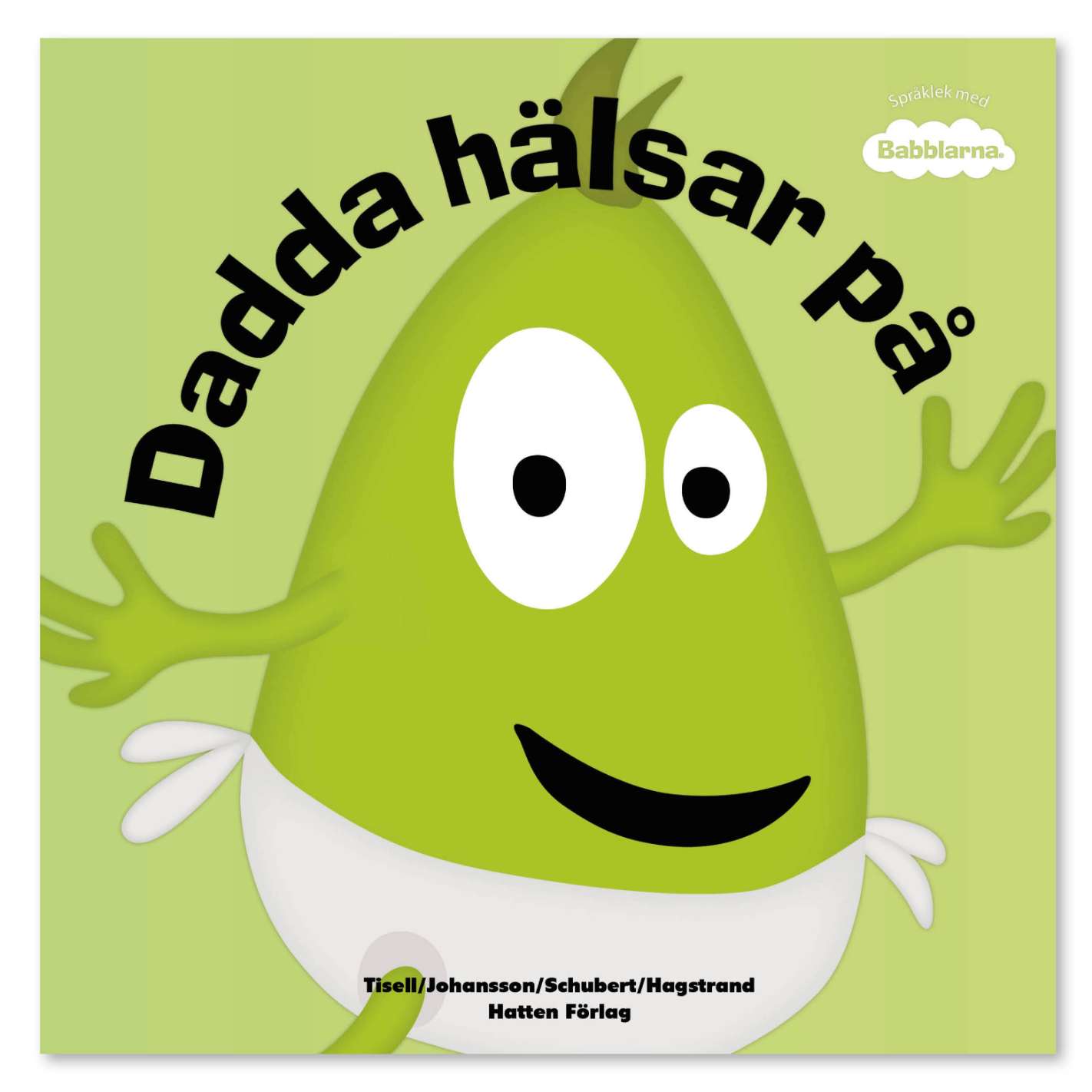
In “Dadda Visits,” there are doors to knock on, which is especially suitable for those children who need to be motorically active to maintain concentration. And with “Where are Babba’s things?” it’s easy to work with tricky concepts like location words (under, on, behind).
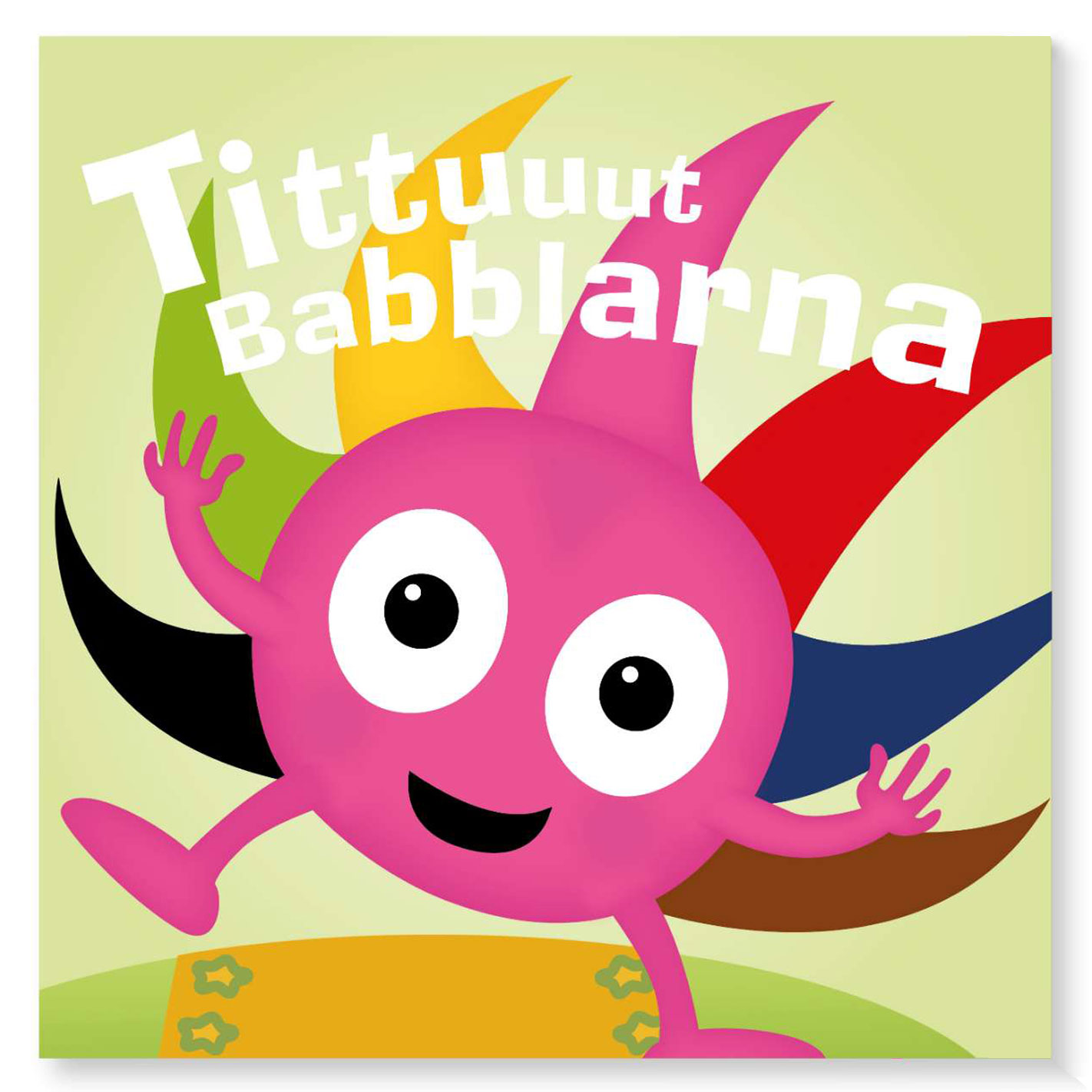
The “chat books” in cardboard are almost textless to entice both you and your child to talk about everything happening in the pictures. Empty out all the content in the pictures, talk a lot, make up your own story. A good tip is to stick to approximately the “same story” each time and just add a little something new now and then. Most children love the repetition and it’s only when they “know” the story that they truly become active themselves in the book reading by pointing and telling. (Examples of chat books are: Tittuuut Babblarna, Babbibboo Babblarna!, Daddiddoo Babblarna?)
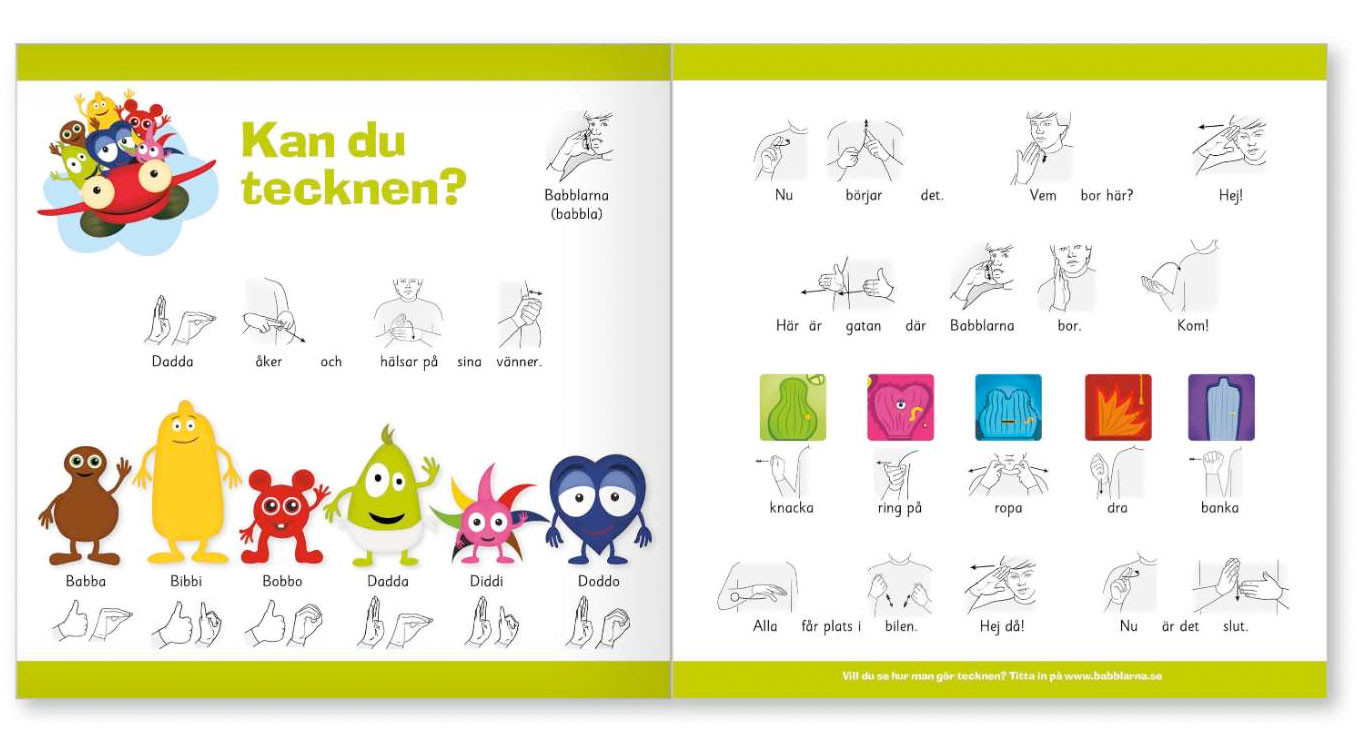
At the back of most books, there are also illustrations showing how to sign the different words of the book, as signs combined with speech are an excellent way to stimulate early language development. Signs are a great help for many children to clarify words and make it easier to learn them. For many children, the signs are a bridge to speech that allows speech and language to develop better. Signing is fun for all children and adults – give it a try!
Play, play, play!
With Babblarna, you can play anything and simultaneously build language. You can be inspired by the books or think of other things that the children find fun
. Use Babblarna along with other toys you already have and let the children participate and decide! If we put words on what is happening in the play, capture what the children are saying and expand on it, it can be very language developing.
Affirm what the child is saying
If your child says “Babba nanna,” you can say “Yes, Babba is going nanna. Babba is going to sleep.”
We can also make suggestions about what could happen in the play and see if the children can respond with words, gestures or signs:
“Should Bibbi bathe or build with blocks?” and “Who else wants to join? Dadda or Babba?”
It is only our (and the children’s) imagination that sets the limits!
Extra support in language development
For small and big children who need extra support in their language development, you can also work purposefully and structuredly with Babblarna. At Hatten Publishing, there are both factual books, guides, and a lot of different language playful material for that.

